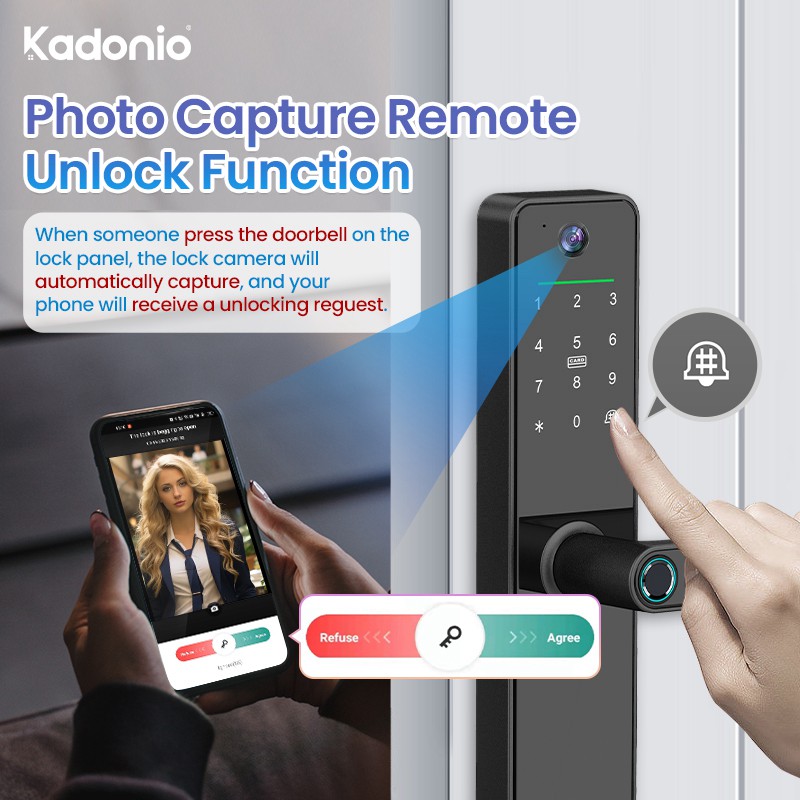The indoor screen in smart locks is playing a crucial role in enhancing the user experience. In recent years, cat-eye video locks have become a popular product in the smart lock industry. Have you noticed that alongside the essential camera, indoor screens are now almost a standard feature in these locks?
We spoke with industry experts, and they confirmed this trend—cat-eye video locks with indoor screens are becoming more and more common. Our discussions revealed the significant impact these small screens have on users’ daily lives.
1. Indoor Screen + Camera: Providing a Clearer View for Users
Today, the indoor screens of smart locks are synchronized with front-panel cameras, effectively replacing traditional optical cat-eyes (the small circular viewers on doors).
Optical cat-eyes offer a limited view through a small hole, with poor image quality and low adaptability to lighting conditions. In low-light or nighttime situations, it’s difficult to see what’s happening outside the door. To address these shortcomings, electronic cat-eyes were developed. These electronic systems consist of a camera and an indoor screen, with the camera capturing the image and transmitting it to the screen for viewing.
The combination of a camera and indoor screen in cat-eye video locks not only replaces the outdated optical technology but also enhances home security by integrating door locks, doorbells, and surveillance into one efficient package. These systems are more cost-effective and offer greater functionality.
Most cat-eye video locks now feature wide-angle or fisheye lenses, providing a broader view than traditional cat-eyes. They also include infrared night vision, allowing them to adapt to varying lighting conditions, making it easier to monitor activity outside the door at any time. The indoor screens, often IPS color displays, offer accurate colors, faster response times, and energy-saving features, enhancing both visibility and efficiency.
More importantly, with an indoor screen, users no longer need to press their face close to the door to check outside, as was required with traditional cat-eyes. The smart lock’s indoor screens, often around 4 inches in size, offer a much better viewing experience.
2. Small Screen, Big Impact: Addressing the Needs of Special User Groups
In addition to product benefits, indoor screens cater to the needs of special user groups, such as the elderly, children, and individuals living alone.
❶ Easier Use for Seniors and Children
Many elderly individuals and young children may not own or know how to use smartphones to access remote monitoring or communication functions. In such cases, the indoor screen provides a convenient way to check the situation outside the door without relying on complex devices.
❷ Added Security for People Living Alone
As the number of people living alone continues to grow, smart locks with indoor screens add an extra layer of security. When someone rings the doorbell or if there’s suspicious activity outside, individuals can quickly check the screen to assess the situation before deciding whether to open the door, reducing the risk of unexpected incidents.
The rise of indoor screens in smart locks may reflect a broader industry trend or simply be a response to user demand for improved security. Although incorporating a high-quality indoor screen can add about $100 to the product cost, the convenience and safety it provides make it far from a redundant feature.
Looking ahead, the development of indoor screens in smart locks—whether in size, resolution, or material—continues to advance, offering users an increasingly refined experience. As the technology evolves, indoor screens are set to meet more complex user needs and adapt to various scenarios, making smart homes even smarter.
Post time: Oct-09-2024





